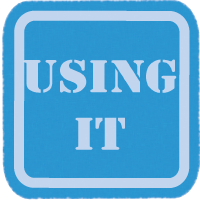 Information Gap Activities
Information Gap Activities
 |
Teachers are often searching for activities to make their classroom more interactive; language teachers in particular are also looking for activities that promote target language use. Info Gap activities are excellent activities as they force the students to ask each other questions; these activities help make the language classroom experience more meaningful and authentic. This section will explain in more detail what Info Gap activities are and why they are useful; it will also give some examples of Info Gap activities for any language classroom. |
What is an Info Gap activity?
An Info Gap activity takes place between students, not between a student and a teacher, though a teacher can certainly demonstrate the activity. The two students will be asking each other questions to which they don’t know the answer; these questions are called referential questions. The goal of the activity is for the students to discover certain information, whether about the other person or related to a specific activity.
What are referential and display questions?
A referential question is a question to which the person asking does not know the answer. For example, you might ask a new student:
“Where are you from?” or “What is your name?”
The teacher does not know the answer to these questions; the purpose of asking these questions is to discover information, similar to the Info Gap activities.
A display question is a question to which the person asking does know the answer. For example, you might ask a student:
“What colour is my sweater” or “Do I have long or short hair?
The teacher clearly knows the answer to these questions; the purpose of asking is to promote student speaking, or to prompt students to remember certain information (whether it be vocabulary, grammar, etc.)
back to top
Why are Info Gap activities useful?
Info Gap activities are useful because they are very meaningful; all students are involved in the process equally and they are all moving towards a specific purpose. Each student has the task of finding out certain information, and therefore must find a way in which to ask for this information. Motivation is usually quite high in these activities. These activities help move the students from working in a more structured environment into a more communicative environment; they are hopefully using lots of the target language, and in the process discovering where they have gaps. Knowing where these gaps are gives them a direction in which to improve.
back to top
What are some examples of Info Gap activities?
Watch the video to the right and decide whether the activity is an Information Gap Activity. Explain your decision. |
-
20 questions: Students work in pairs or small groups. One student chooses an object or person and keeps it a secret. The other students must ask yes or no questions to determine what that object/person is. The maximum number of questions is 20.
-
Guess the card: Students work in partners. This is similar to 20 questions only the students already have the object chosen for them. One student holds a card so that their partner can’t see. The partner must then ask yes or no questions to determine what is on the card. Often teachers structure this activity to fit with the theme of a particular unit.
-
Find your partner: Whole class participates. Students are each given a card with an image on it; there are two of each image. Students must circulate and try to find the person with the same image by asking yes or no questions. The students may not ask “Do you have an elephant” if their image is, for example, an elephant. They must ask more descriptive questions, for example “Does your thing have 4 legs?” or “Does your thing live in the jungle?”
-
Words on back: Students work in large groups or as a whole class. Each student has a word attached to his or her back; the students must then circulate asking each other yes or no questions to determine what word is on their back.
- Same different: Students work in pairs. Each has a different picture that should not be shown to their partner. The students take turns asking each other yes or no questions to find out how the pictures are different.
Fill in the chart: Students work in partners. The students are both given tables with information missing. What is missing in one partner’s table is there on the other partner’s table and vice versa. Students must ask each other questions to discover what is missing in each of their tables. For an example, click on http://www.eslgold.com/speaking/information_gap.html
back to top

Using Info Gap Activities in the Second Language Classroom
http://www.caslt.org/Print/gapp.htm



